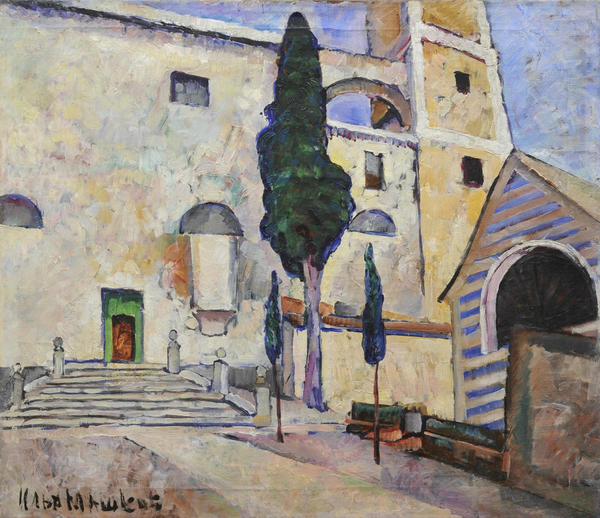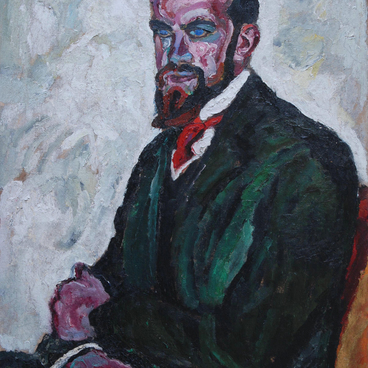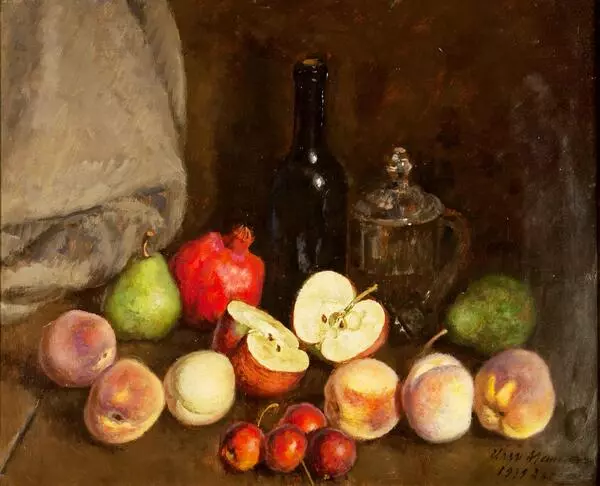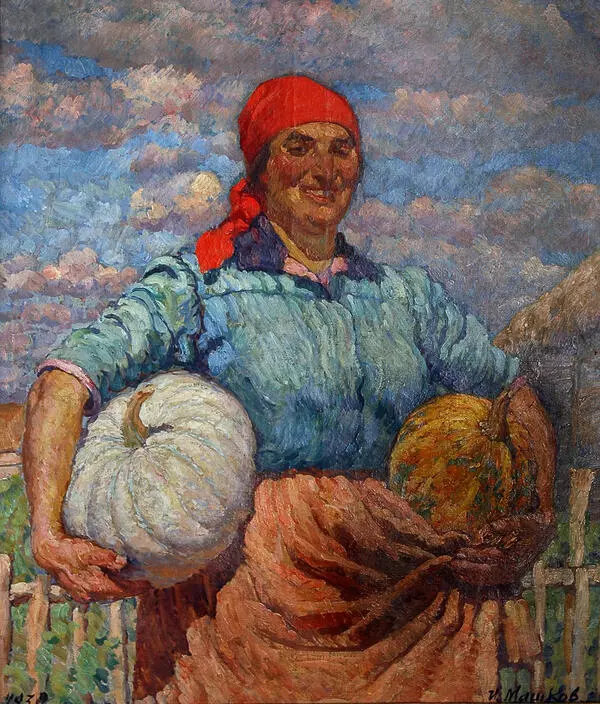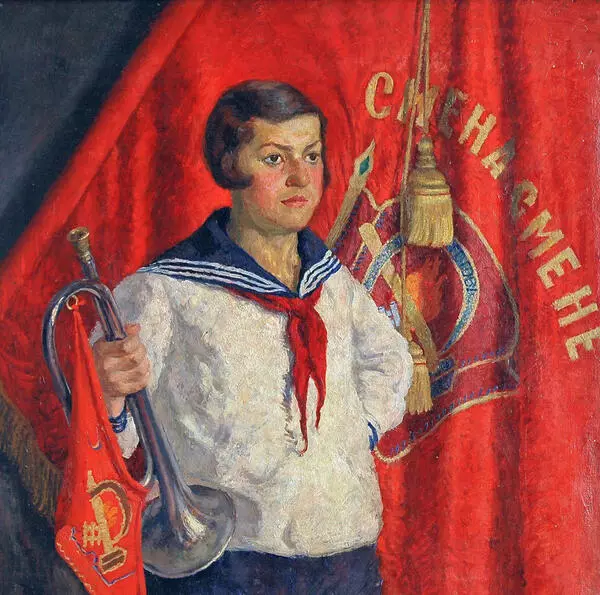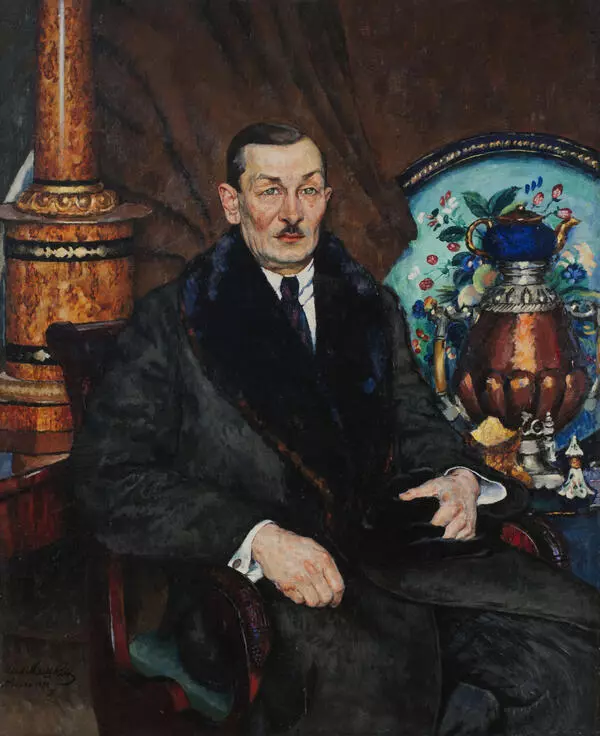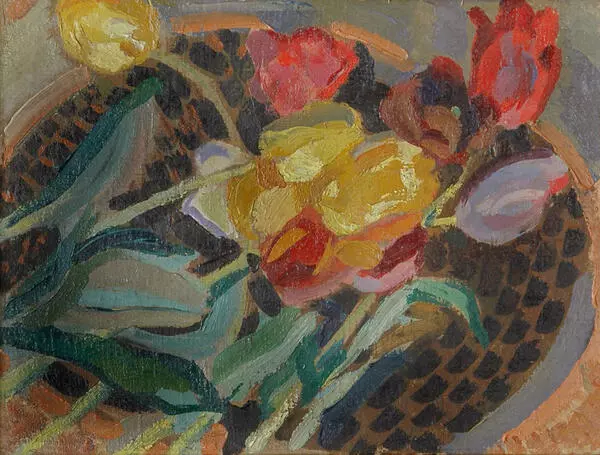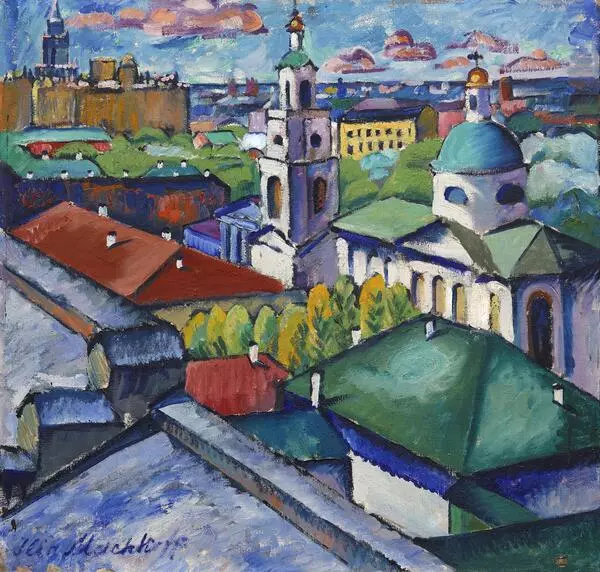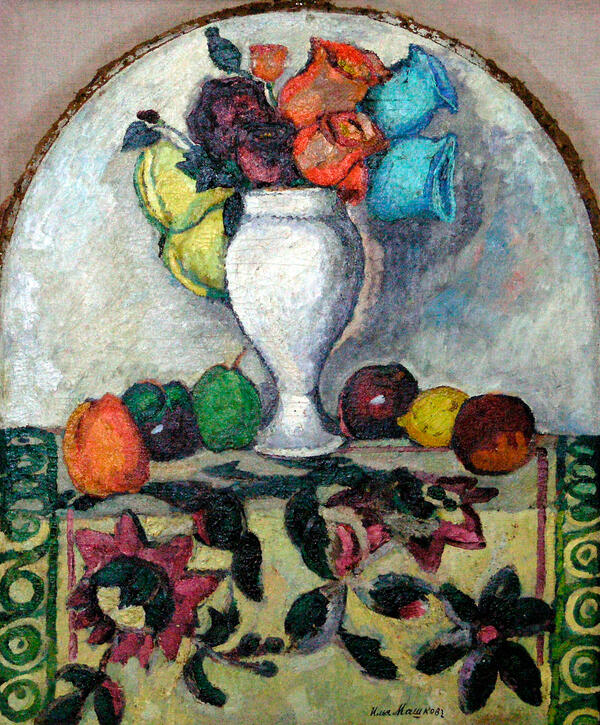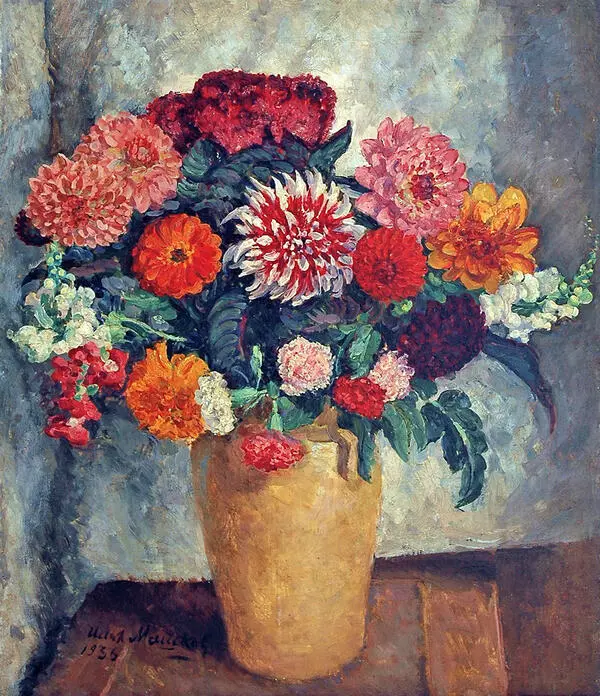In 1921, Ilya Mashkov’s picture titled Gagry was transferred to the Vladimir Museum from a Moscow office. Only 60 years later, when the museum was actively involved in the work to research and expand its collection of paintings in the 1980s, its specialists discovered that Mashkov’s sunny and warm landscape was not from the popular Abkhaz resort but from Italy where the artist had travelled in December 1913.
The Don Cossack Ilya Mashkov was born in the Cossack village of Mikhaylovskaya in 1881 and was the eldest son in a family of nine children. He began to draw when his parents made him an apprentice; the boy was a hand at commercial shops, and in his free minutes, he made outdoor signs for them. Ilya was unaware that painting could be a career until a teacher at a boys’ school suggested that he should study to be a professional artist. Mashkov quit his job at a shop, and, a few months later, he took the Moscow School of Painting, Sculpture and Architecture “by storm.”
Mashkov was a pupil of different renowned painters, including Valentin Serov, Konstantin Korovin and Abram Arkhipov. The artist quickly found his own peculiar style: In his works, he liked to accentuate colors and to hyperbolize shapes.
Soon Mashkov became a teacher himself. In 1904 already, when the painter was only 23, he was allowed to tutor, in order to improve his dire financial situation. Many of Mashkov’s students became famous artists afterwards: Robert Falk, Vladimir Tatlin, Ivan Klyun, Vera Mukhina and others.
It was at Mashkov’s studio that the Jack of Diamonds, a group of avant-garde artists, was started in the 1910s. Ilya Mashkov, Aristarkh Lentulov, Piotr Konchalovsky and other members of the movement painted flashy, evocative pictures inspired by Cubism and French Postimpressionism, in opposition to traditions of academic Realism.
In the 1920s, Mashkov joined the Association of Artists of Revolutionary Russia. The main theme of his works was the happy Soviet lifestyle: The artist painted guerrilla fighters and young pioneers, scenes of the best performance in labor, and collective-farm landscapes. One of his best-known works was Greetings to the 17th Congress of the All-Union Communist Party of Bolsheviks, a still-life with busts of Karl Marx, Vladimir Lenin and Joseph Stalin surrounded by flowers. During the years of the Great Patriotic War, Mashkov painted portraits of soldiers and workers, but he did not live to see the end of the war. In 1944, the artist was buried at the Novodevichy Cemetery in Moscow.
The Don Cossack Ilya Mashkov was born in the Cossack village of Mikhaylovskaya in 1881 and was the eldest son in a family of nine children. He began to draw when his parents made him an apprentice; the boy was a hand at commercial shops, and in his free minutes, he made outdoor signs for them. Ilya was unaware that painting could be a career until a teacher at a boys’ school suggested that he should study to be a professional artist. Mashkov quit his job at a shop, and, a few months later, he took the Moscow School of Painting, Sculpture and Architecture “by storm.”
Mashkov was a pupil of different renowned painters, including Valentin Serov, Konstantin Korovin and Abram Arkhipov. The artist quickly found his own peculiar style: In his works, he liked to accentuate colors and to hyperbolize shapes.
Soon Mashkov became a teacher himself. In 1904 already, when the painter was only 23, he was allowed to tutor, in order to improve his dire financial situation. Many of Mashkov’s students became famous artists afterwards: Robert Falk, Vladimir Tatlin, Ivan Klyun, Vera Mukhina and others.
It was at Mashkov’s studio that the Jack of Diamonds, a group of avant-garde artists, was started in the 1910s. Ilya Mashkov, Aristarkh Lentulov, Piotr Konchalovsky and other members of the movement painted flashy, evocative pictures inspired by Cubism and French Postimpressionism, in opposition to traditions of academic Realism.
In the 1920s, Mashkov joined the Association of Artists of Revolutionary Russia. The main theme of his works was the happy Soviet lifestyle: The artist painted guerrilla fighters and young pioneers, scenes of the best performance in labor, and collective-farm landscapes. One of his best-known works was Greetings to the 17th Congress of the All-Union Communist Party of Bolsheviks, a still-life with busts of Karl Marx, Vladimir Lenin and Joseph Stalin surrounded by flowers. During the years of the Great Patriotic War, Mashkov painted portraits of soldiers and workers, but he did not live to see the end of the war. In 1944, the artist was buried at the Novodevichy Cemetery in Moscow.



